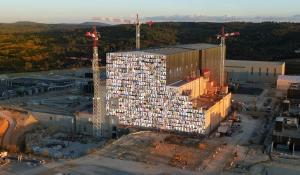The men and women of ITER
They hail from Ahmedabad and Prague ... from Naka and Moscow ... from Seoul, Hefei, Atlanta and hundreds of other towns and cities across the 35 nations participating in the project. These are the men and women of ITER—nearly one thousand staff members, speaking at least 30 languages—who have relocated to southern France to be part of the ITER adventure.
The 2020 Report on Human Resources, released just this month by the Human Resources Department, offers the most recent portrait of the human element of ITER. Who is behind the engineering, the science, and the day-to-day management and administration of the world's largest research collaboration?
ITER Organization staff numbers grew by 6.5 percent in 2020, reaching a count of 989 by 31 December 2020. (Today, six months later, 1,014 people are directly employed by the project.)
European staff members represent 68.6 percent of the 2020 total, while staff from the six other Members is distributed as follows: China 9 percent, India 2.8 percent, Japan 3.5 percent, Korea 5.2 percent, Russia 6 percent; and the United States 5 percent. Staff joined the project from all ITER Members in 2020, with the Human Resources Department fielding 3,488 applications for 91 newcomer recruitments. Of total appointments in 2020, 25.2 percent were women.
Just over 75 percent of ITER staff members have an advanced degree (Master's, engineering degree, or PhD). Women represent just under 20 percent of the staff body, and hold 9.4% of management positions. The average age of all staff is 44.7 years old (42.6 years for women, and 45.3 years for men). In 2020 turnover dropped to 3.8 percent, from 5.3 percent in 2019 and 5.9 percent in 2018.
Nearly three-fourths of staff has chosen to live in either Aix-en-Provence (pop. 140,000) or Manosque (pop. 22,500), two of the larger towns in the ITER environment, and 73 percent have at least one dependent child. Nearly 79 percent of staff were rewarded in 2020 for performance, up from 62.2 percent in 2019. One non-staff category—the ITER Project Associates—progressed strongly in 2020, increasing to 209 from 160 the previous year.
The Human Resources Department continued to fulfil all of its normal business activities in 2020 despite the particular context of the pandemic, carrying out recruitment, training, and all employee services.
See all of the granular detail in the 2020 ITER Organization Report on Human Resources in this issue of the ITER Newsline (or click here).
View the 2021 ITER Organization staff photo here.


